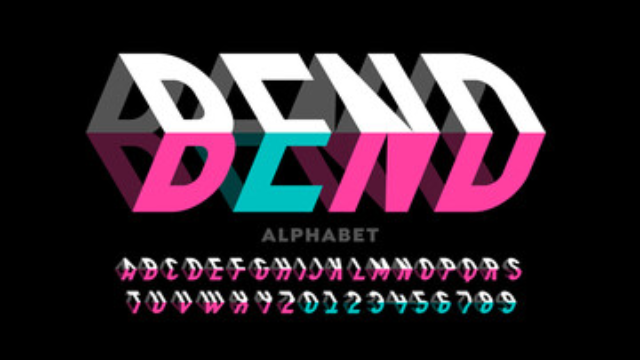Are you curious about what typography really is in graphic design? Look no further! In this article, we’ll explore the definition of typography, its historical evolution, and why it’s so crucial in the world of graphic design. We’ll also delve into the various elements, styles, and techniques of typography, and how it can be used effectively across different design media. So, if you’re ready to dive into the fascinating world of typography, let’s get started!
Definition of Typography
Typography is regularly used in graphic design to communicate information through the arrangement and style of typefaces. The evolution of typography has had a significant impact on the field of graphic design, shaping its aesthetics and functionality over time.
Throughout history, typography has gone through various stages of development, from handcrafted lettering to the invention of movable type and the digital era. Each stage brought new possibilities and challenges, pushing designers to explore different typographic styles and techniques. The evolution of typography has not only influenced the visual aspects of design but also its effectiveness in conveying messages.
The impact of typography in graphic design cannot be overstated. The choice of typeface, font size, spacing, and layout can evoke specific emotions, create hierarchy, and enhance readability. It can set the tone for a design and establish a brand’s identity. Typography has the power to make information more accessible and engaging, or on the contrary, confuse and alienate the audience.
Historical Evolution of Typography
Let’s take a journey through the history of typography and explore its evolution over time. From ancient typographic techniques used by scribes and calligraphers to the printing press revolution that brought about mass production of books, typography has come a long way. And with the advent of modern digital typography, we now have endless possibilities for creative expression and design. Get ready to discover the fascinating story behind the development of this essential element in graphic design.
Ancient Typographic Techniques
Explore the fascinating evolution of typography through ancient typographic techniques. In the ancient world, typographic tools and scripts played a crucial role in communication and written language. Ancient civilizations developed various tools to create and reproduce text, such as styluses, quills, and ink. These tools allowed for the creation of intricate and beautiful scripts, such as hieroglyphics in Ancient Egypt, cuneiform in Mesopotamia, and the Phoenician alphabet. Each script had its own unique characteristics, reflecting the culture and language of its time. These ancient typographic techniques paved the way for the development of modern typography, influencing the design and layout of written text that we see today. It is through the study of these ancient techniques that we gain a deeper appreciation for the art of typography.
| Ancient Typographic Tools | Ancient Typographic Scripts |
|---|---|
| Styluses | Hieroglyphics |
| Quills | Cuneiform |
| Ink | Phoenician Alphabet |
Printing Press Revolution
The printing press revolutionized the historical evolution of typography. With its invention in the 15th century by Johannes Gutenberg, the printing press brought about significant changes in the world of publishing. The advantages of the printing press were numerous. Firstly, it allowed for the mass production of books, making them more affordable and accessible to a wider audience. Secondly, it enabled the standardization of typefaces, leading to consistency in typography across printed materials. This improved readability and enhanced the overall aesthetic appeal of printed works. The impact on publishing was profound, as it facilitated the dissemination of knowledge and information on a larger scale. The printing press laid the foundation for the modern typography we see today, shaping the way we communicate through text and design.
Modern Digital Typography
After the printing press revolutionized typography, the historical evolution of typography continued with the advent of modern digital typography. Digital typography techniques have transformed the way we create and display text in graphic design. With the rise of computers and software, designers now have access to a wide range of tools and fonts to enhance their work. Modern typography trends focus on clean lines, minimalism, and readability. Designers are experimenting with different font combinations, sizes, and colors to create visually appealing and engaging designs. The flexibility of digital typography allows for easy manipulation and customization, giving designers the freedom to push boundaries and explore new possibilities. As technology continues to advance, we can expect even more innovative digital typography techniques and trends to emerge in the future.
Importance of Typography in Graphic Design
Typography plays a vital role in graphic design as it has the power to create a strong visual impact on your audience. The choice of fonts, sizes, and styles can evoke different emotions and convey a specific message effectively. Additionally, typography helps in communicating the brand identity, establishing a unique and recognizable visual language that sets your design apart from others.
Visual Impact of Typography
To create a visually impactful graphic design, it is crucial to understand the significance of typography. Typography trends play a significant role in capturing the audience’s attention and conveying the desired message effectively. Designers are constantly exploring new ways to push the boundaries of typography, experimenting with unique fonts, styles, and layouts. The psychology of typography also plays a pivotal role in creating visual impact. Different fonts evoke different emotions and convey different meanings. For example, bold and uppercase fonts can convey strength and authority, while handwritten fonts can evoke a sense of intimacy and authenticity. By understanding the psychology behind typography, designers can strategically choose fonts that align with the intended message and effectively communicate with their audience, ultimately creating a visually impactful design.
Communicating Brand Identity
When establishing your brand identity in graphic design, the strategic use of typography is crucial. Typography plays a significant role in communicating your brand’s personality, values, and message effectively. It helps create a visual language that resonates with your target audience and sets your brand apart from competitors. By carefully selecting fonts, sizes, and spacing, you can evoke specific emotions and convey the desired tone. Here is a table that illustrates the impact of typography on brand identity:
| Typeface | Characteristics | Suitable for |
|---|---|---|
| Serif | Traditional, trustworthy | Professional services, luxury brands |
| Sans-serif | Modern, clean | Technology, fashion, lifestyle |
| Script | Elegant, feminine | Beauty, wedding, fashion |
Elements of Typography
Understanding the essential components of typography is crucial for creating impactful graphic designs. When it comes to typography elements, there are a few key principles that you need to consider.
- Typeface: The typeface is the specific design of the letters and characters. Choosing the right typeface can set the tone and convey the message of your design. Whether it’s a bold and playful font or a clean and elegant one, the typeface plays a significant role in the overall aesthetic.
- Hierarchy: Establishing a clear hierarchy in your typography helps guide the viewer’s attention and makes the information easier to understand. By varying the size, weight, and style of your type, you can create a visual hierarchy that emphasizes important elements and organizes the content.
- Spacing: Proper spacing between letters, words, and lines can greatly impact the readability and visual appeal of your typography. Kerning refers to adjusting the space between individual letters, while leading is the spacing between lines. Finding the right balance ensures that your text is both legible and visually pleasing.
Typography Styles and Techniques
Now, let’s delve into the various typography styles and techniques that can elevate your graphic design. Understanding typography trends and incorporating them into your designs can make a significant impact on the overall aesthetic and message you want to convey. Additionally, typography psychology plays a crucial role in influencing how your audience perceives and engages with your design.
Typography Trends:
Here are some current typography trends that you can explore and experiment with:
| Trend | Description |
|---|---|
| Bold Sans-serif | Clean and modern, with strong and confident lines |
| Handwritten | Personal and unique, adding a touch of authenticity |
| Retro | Nostalgic and vintage, evoking a sense of nostalgia |
| Minimalist | Simplistic and clean, focusing on essential elements |
| Experimental | Pushing boundaries and creating unconventional designs |
Typography Psychology:
Understanding the psychology behind typography can help you effectively communicate your message. Different fonts evoke different emotions and associations. For example, serif fonts are often associated with tradition, while sans-serif fonts convey a modern and clean aesthetic. Additionally, the spacing between letters and words, known as kerning and tracking, can affect readability and visual impact.
Typography in Different Design Media
To effectively utilize typography in graphic design, it is important to consider how it translates across different design media. Typography plays a crucial role in web design, where it is essential for creating visually appealing and easily readable content. In web design, typography choices can greatly impact user experience, as legibility and readability are key factors in keeping users engaged. Additionally, typography in web design can be used to convey the tone and personality of a brand or website.
Typography is also an important element in packaging design. In this context, typography serves both functional and aesthetic purposes. The typography used on packaging must be legible and clear, allowing consumers to easily understand product information. At the same time, typography can be used creatively to catch the attention of potential buyers and communicate the brand’s message effectively.
Typography as a Branding Tool
Typography plays a significant role in branding as it helps convey the personality and identity of a brand. When used strategically, typography can enhance user experience and create a strong visual impact.
In today’s digital age, social media marketing has become an essential tool for brands to connect with their audience. Typography plays a crucial role in this aspect as well. Consistent and well-designed typography helps to create a cohesive brand image across different social media platforms. It allows brands to stand out in the crowded online space and make a memorable impression on their target audience.
Moreover, typography in social media marketing can also enhance the user experience. Clear and legible typography ensures that the brand’s message is easily readable and understood by users. By choosing the right font styles, sizes, and colors, brands can evoke specific emotions and create a positive association with their products or services.
Tips for Effective Typography in Graphic Design
When using typography in graphic design, it is important to follow certain tips to ensure effective and impactful design. Here are three essential tips to consider:
- Typography Principles: Familiarize yourself with the basic principles of typography, such as choosing the right typeface, considering readability and legibility, and maintaining consistency throughout your design. Understanding these principles will help you make informed decisions and create visually appealing typography.
- Typography Hierarchy: Establish a clear hierarchy in your typography to guide the viewer’s attention and convey the intended message effectively. Use varying font sizes, weights, and styles to differentiate headings, subheadings, and body text. This will help create a visually balanced and organized design.
- Whitespace and Alignment: Don’t underestimate the power of whitespace and alignment in typography. Give your typography room to breathe by incorporating ample whitespace between elements. Also, ensure proper alignment of text to maintain a clean and professional look. Consistent alignment creates a sense of order and makes the design more visually pleasing.



